Many teachers find it difficult to fit the syllabus into assigned lessons while simultaneously staying on top of many other responsibilities. Fortunately, this lesson plan template can help you stay organized and in control.
Free lesson plan templates for teachers or parents who homeschool their kids. All templates are editable so you can personalize and customize them to suit your needs. Either print a blank lesson plan template and write your lesson plan or edit the template before you print. We offer many free lesson plan themes to suit every teaching style.
On this page, you will find more than 50 templates for lesson plans in various file formats: PDF, Word, Excel, images, and Google Docs.
Weekly Lesson Plan Template
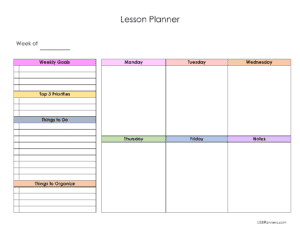
Word | PDF | Excel | Image | Google Docs
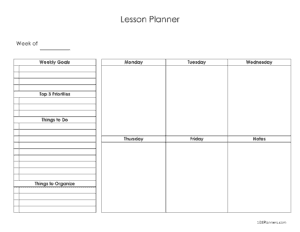
Word | PDF | Excel | Image | Google Docs
Each printable lesson plan template below starts from Monday to Friday. There are 8 versions with 1 to 8 lessons each day.
- 1 Lesson per Day: Word | PDF | Excel | Image
- 2 Lessons per Day: Word | PDF | Excel | Image
- 3 Lessons per Day: Word | PDF | Excel | Image
- 4 Lessons per Day: Word | PDF | Excel | Image
- 5 Lessons per Day: Word | PDF | Excel | Image
- 6 Lessons per Day: Word | PDF | Excel | Image
- 7 Lessons per Day: Word | PDF | Excel | Image
- 8 Lessons per Day: Word | PDF | Excel | Image
This weekly template has 8 versions, with 1 to 8 lessons each day. There is space for both a lesson plan and the homework assignment for that lesson.
- 1 Lesson per Day: Word | PDF | Excel | Image
- 2 Lessons per Day: Word | PDF | Excel | Image
- 3 Lessons per Day: Word | PDF | Excel | Image
- 4 Lessons per Day: Word | PDF | Excel | Image
- 5 Lessons per Day: Word | PDF | Excel | Image
- 6 Lessons per Day: Word | PDF | Excel | Image
- 7 Lessons per Day: Word | PDF | Excel | Image
- 8 Lessons per Day: Word | PDF | Excel | Image
We also offer many more weekly planner templates that you can customize.
Daily Lesson Plan Template
This daily lesson plan template will organize your lesson, including supplies you might need, homework you should give, preparations to prepare, etc. It will remind you of everything you need to do to ensure that your lesson is ready. Once you have prepared the lesson, then you can use the simple lesson plan template for the next year since the preparations will be complete. If you keep your lesson plans organized, then preparing for each year will be easy and stress-free.
If you don’t want a unique teacher daily planner template, then check out our daily planner templates that might be helpful as-is or with some changes (all the templates are free and editable).
Teacher Lesson Plan Template
We offer free lesson plans for teachers in elementary to high school. There are also options for preschool. If you are looking for a college-level lesson plan template you can probably find templates you can use with little to no editing. If you want to edit the layout of any template, then select the Word or Excel version.
Preschool Lesson Plan
Free printable preschool lesson plans for preschool teachers. For preschool and kindergarten, you can use a template with lesson plan clipart to make it more fun and interesting.
You can download the preschool weekly lesson plan template as an image or a PDF file.
Creating a Preschool Lesson Plan is an exciting opportunity to engage young minds in a fun and educational way. Start by setting clear learning objectives and choose a theme or topic that captures the children’s imagination. Incorporate a variety of activities, including songs, stories, art projects, and hands-on experiments, to make learning enjoyable and interactive. Remember to consider individual learning styles and adapt your plan accordingly. Keep the activities age-appropriate and flexible, allowing room for spontaneous discoveries and exploration. With a well-thought-out lesson plan, you’ll create a nurturing and stimulating environment where preschoolers can grow, learn, and develop important skills while having a blast!
Elementary Lesson Plan Template
Crafting an elementary lesson plan is an essential step in providing quality education that nurtures young minds. Start by defining clear learning objectives, aligning them with curriculum standards, and choosing engaging activities that cater to diverse learning styles. Incorporate interactive discussions, hands-on projects, and assessments that foster critical thinking and creativity. Flexibility is key, as it allows you to adapt to your students’ needs and interests. With a well-structured lesson plan, you’ll create a dynamic and supportive classroom environment where elementary students can thrive academically and personally. Our free elementary lesson plan templates will help you bring your teaching goals to life, ensuring an enriching and enjoyable learning experience for your students.
30 Page Lesson Plan Book
To create a class plan template for elementary school you can also use any of the templates above.
Middle School Lesson Plan Template
Most of the templates above can be used for middle school classes.
Designing a middle school lesson plan is a unique endeavor that takes into account the changing needs and abilities of adolescents. Middle school students are at a pivotal stage in their development, seeking more independence and engagement. Your lesson plan should include clear learning objectives that challenge critical thinking and problem-solving skills. Emphasize interactive activities, group discussions, and technology integration to keep students engaged and connected to real-world applications. Assessment strategies should focus on deeper comprehension and analysis, preparing them for higher academic demands. Our free middle school lesson plan templates are tailored to meet the specific needs of middle school students, helping you foster their academic growth and support their social and emotional development during this critical transitional phase.
31 Page Lesson Plan Book
If you want to edit the sections then select the Word version below.
This is a detailed daily lesson plan format suitable for middle school lessons and high school lessons. It includes a lot of sections but you can delete the sections you don’t want to include.
The following sections are included:
- Lesson Title: A clear, concise title that summarizes the main focus of the lesson.
- Date: The date on which the lesson will be taught.
- Grade/Class: Specify the grade level or class for which the lesson is intended.
- Duration: The estimated time needed to complete the lesson (e.g., 45 minutes, 90 minutes).
- Learning Objectives: Clearly state the specific learning goals or outcomes for the lesson. What do you want students to know, understand, or be able to do by the end of the lesson?
- Materials and Resources: List all the materials, textbooks, technology, handouts, or other resources needed for the lesson.
- Preparation: Describe any preparation required before the lesson, such as setting up equipment or preparing materials.
- Introduction: Outline how you plan to introduce the lesson to the students. What will you do to engage their interest and set the stage for learning?
- Instructional Strategies: Describe the teaching methods, strategies, or activities you will use during the lesson to convey the content.
- Content: Present the main content or subject matter of the lesson. Include key concepts, facts, or information to be covered.
- Differentiation: If applicable, detail how you will differentiate instruction to meet the diverse needs of students (e.g., accommodating special needs, providing enrichment for advanced students).
- Assessment: Describe the methods or assessments you will use to gauge student understanding and progress. This may include quizzes, discussions, projects, or homework assignments.
- Closure: Explain how you will wrap up the lesson, summarize key points, and reinforce learning.
- Homework/Assignments: If there are any assignments or homework tasks associated with the lesson, list them here.
- Reflection/Evaluation: Leave space for your own reflections on the lesson. What worked well? What would you change next time? This helps improve future lessons.
- Notes: A section for any additional notes, reminders, or comments related to the lesson.
- Standards/Alignment: If your lesson is aligned with specific educational standards or curriculum guidelines, note those here.
- Teacher Name: Your name or the name of the instructor.
- Room/Location: Indicate the classroom or location where the lesson will take place.
- Signature: A space for your signature or initials, which may be useful for documentation or accountability.
High School Lesson Plan Template
The templates below and most of the templates above can be used for high school classes.
Crafting an effective high school lesson plan is a vital step in guiding students toward academic excellence and preparation for their future endeavors. High school students are transitioning into young adults, and your lesson plan should reflect this by encouraging more independent learning and critical thinking. Set clear learning objectives aligned with rigorous academic standards, and incorporate activities that challenge students to analyze, synthesize, and apply their knowledge. In-depth discussions, research projects, and practical applications of concepts are key components of high school lesson planning. Utilize various assessment methods to evaluate their comprehension and help them prepare for college or the workforce. Our free high school lesson plan templates are tailored to meet the advanced needs of high school students, ensuring a robust educational experience that equips them for success beyond the classroom.
This teaching plan template is for high school classes.
College Lesson Plan Template
This template is similar to the middle school and high school templates above but it includes additional sections such as:
- Alignment with Course Objectives: This section explicitly addresses how the lesson aligns with the overall course objectives and learning outcomes, emphasizing the integration of the lesson within the broader curriculum.
- Additional Information: This section allows for the inclusion of supplementary information or resources relevant to the college or university-level instruction, such as references or additional readings.
- Office Hours: It provides a space to specify your office hours for college or university students to seek assistance or clarification, acknowledging the more independent and proactive approach expected from them.
- University/College Policies: This section is included to highlight and communicate specific university or college policies that pertain to the course, such as late assignment policies or academic integrity guidelines.
This is a sample college lesson plan template.
The Benefits of a Lesson Template
Using a lesson plan template offers several benefits for teachers, whether they’re working with preschoolers, elementary, middle school, or high school students. Some of the key advantages include:
- Organization: Lesson templates provide a structured framework to organize your teaching materials, activities, and objectives. This organization helps you stay on track during the lesson and ensures you cover all the necessary content.
- Consistency: Templates promote consistency in your teaching approach. When you use the same format for each lesson, it’s easier for both you and your students to follow and understand the lesson structure.
- Time-Saving: Creating a lesson plan from scratch can be time-consuming. Templates streamline the process, allowing you to focus more on the content and teaching strategies rather than formatting.
- Alignment with Objectives: Templates often include sections for learning objectives and goals. This ensures that your lessons are aligned with curriculum standards and learning outcomes.
- Flexibility: While templates provide structure, they also allow for flexibility. You can adapt and customize them to suit your students’ needs, interests, and any unexpected classroom situations.
- Improved Communication: Lesson plans are useful for communicating your teaching intentions and goals with colleagues, administrators, and even substitute teachers. They provide a clear roadmap for what should be accomplished during a lesson.
- Assessment and Reflection: Templates often include sections for assessment strategies and reflection. This encourages you to think about how you will assess student understanding and what adjustments may be needed for future lessons.
- Professional Development: When you consistently use lesson plan templates, you develop a professional habit of thoughtful lesson planning. Over time, this can enhance your teaching skills and lead to better student outcomes.
- Student Engagement: A well-structured lesson plan can increase student engagement. When students know what to expect, they are more likely to participate actively in the lesson.
- Legal and Administrative Requirements: In some educational settings, such as special education or government-funded programs, having detailed lesson plans may be a legal or administrative requirement. Templates make it easier to meet these obligations.
- Resource Management: Templates often include a section for listing required materials and resources. This helps you ensure you have everything you need before the lesson begins.
Overall, lesson plan templates are valuable tools that help teachers deliver effective, organized, and engaging lessons while promoting professional growth and accountability. They can be adapted to suit different grade levels, subjects, and teaching styles, making them versatile assets for educators.
Which File Format Should You Select
If you find a template that you can use as-is then any format will work for you. If you want to use the template as-is then the free editable lesson plan template PDF will be perfect. Most of the PDF templates are typeable so you can type on them but you cannot change the layout. If you want to change the lesson plan layout, then select the lesson plan template Word or Excel versions. You can make as many changes as you want until the template works for you. Always keep a blank lesson plan template that you can reuse it over and over instead of deleting the content each time.
How to Make a Teacher Lesson Plan Book (Ready-Made)
You can either print or download a ready-made lesson plan book or create your own using the templates above.
Elementary School: 30-Page Lesson Plan Book
Middle School / High School: 31 Page Lesson Plan Book
How to Create a Teacher Lesson Plan Book (DIY)
You can make cheap lesson plan books by printing the templates on this page with a binder cover to create a DIY lesson book. The advantage of creating your own book is that you can choose the template that best suits you or even mix and match if you prefer.
You can include additional printables in your book. For example, if you want to create a teacher’s lesson planner and record book then add both of those templates to your DIY book. Print as many copies as you want to include. See the teacher planner for additional printables that you might find useful.
- Choose any teacher lesson planner printable from the selection above.
- Download it.
- Print as many copies as you want.
- Insert the lesson plan pages into a binder or have them bound.
You can also create a digital template for lesson planning by using the PDF versions of the templates above. See digital planner.
How to Write a Lesson Plan: A Comprehensive Guide for Educators
Writing an effective lesson plan is a fundamental skill for educators. Whether you’re teaching preschoolers or high school students, a well-structured lesson plan can make a significant difference in the learning experience. In this guide, we’ll walk you through the key components of a lesson plan and provide step-by-step instructions on how to create one that meets your teaching goals.
Lesson Plan Format
A lesson plan is a teacher’s detailed description of the course of instruction or “learning trajectory” for a lesson. Here is a general format you can follow when creating a lesson plan. Keep in mind that this is a basic template and can be customized based on individual needs, institutional requirements, and specific educational goals.
[Lesson Title]
1. Objective: Clearly state what students should know or be able to do by the end of the lesson.
2. Standards: List any academic standards that the lesson aligns with.
3. Materials: Detail all materials needed for the lesson, including textbooks, handouts, and technology requirements.
4. Introduction: Describe how you will introduce the lesson to students and any prior knowledge needed.
5. Procedure: Outline the sequence of learning activities, detailing both teacher and student roles and provide an estimated time for each activity.
6. Guided Practice: Explain how students will be guided through the learning activities, highlighting any formative assessment or feedback provided.
7. Independent Practice: Describe activities or assignments that students will complete independently to reinforce learning.
8. Closure: Explain how the lesson will be concluded and how you will reinforce the learning objectives.
9. Assessment/Evaluation: Detail how students’ understanding will be assessed, including any rubrics, tests, or informal assessments used.
10. Homework/Assignments: If applicable, list any homework or assignments that students are required to complete.
11. Differentiation: Describe any modifications or accommodations for students with diverse learning needs.
12. Reflection: After the lesson, note any areas that went well or could be improved for next time.
[Additional Notes/Comments]
- Any other relevant information or notes regarding the lesson.
[Attachments]
- Attach any materials, handouts, or resources used during the lesson.
Remember to be clear and concise, ensuring that the lesson plan is easy to follow, and be flexible, allowing for adjustments based on student needs and progress.
The Key Components of a Lesson Plan
A well-crafted lesson plan consists of several key components, each serving a specific purpose to ensure a successful teaching and learning experience. Here’s a breakdown of these essential elements:
1. Learning Objectives
Begin your lesson plan by clearly defining your learning objectives. What do you want your students to know, understand, or be able to do by the end of the lesson? Learning objectives should be specific, measurable, achievable, relevant, and time-bound (SMART).
2. Materials and Resources
List all the materials and resources you’ll need for the lesson. This includes textbooks, handouts, visual aids, technology, and any specialized equipment. Ensuring you have everything ready in advance will help the lesson flow smoothly.
3. Lesson Introduction
Start your lesson with an engaging introduction that captures students’ attention and provides context for the lesson. You can use anecdotes, questions, multimedia, or real-world examples to pique their interest.
4. Main Content and Activities
This section outlines the core of your lesson. Break down the content into smaller, digestible chunks. Plan activities and strategies that facilitate student engagement and comprehension. Consider using a variety of teaching methods, such as lectures, group discussions, hands-on activities, and multimedia presentations.
5. Assessment and Evaluation
Detail how you will assess student learning during and at the end of the lesson. Include formative assessment strategies (ongoing assessments) and summative assessments (end-of-lesson evaluations). This can encompass quizzes, discussions, projects, or other assessment tools.
6. Differentiation
Address how you will meet the diverse needs of your students. Consider accommodations for students with special needs, English language learners, or advanced learners. Tailor your instruction to ensure every student can access and benefit from the lesson.
7. Closure
End your lesson with a summary or conclusion that reinforces the key points and learning objectives. This closure helps students consolidate their understanding of the material.
8. Homework or Follow-up Activities
If applicable, assign homework or suggest follow-up activities to reinforce what students have learned. This extends the learning beyond the classroom.
9. Reflection and Adaptation
Include a section for your own reflection on the lesson. What worked well, and what could be improved? This self-assessment will help you refine your teaching methods over time.
How to Create a Lesson Plan
Now that you’re familiar with the components, let’s go through the step-by-step process of creating a lesson plan:
Step 1: Identify Your Learning Objectives
- Determine what you want students to achieve by the end of the lesson.
- Ensure your objectives are aligned with curriculum standards and grade-level expectations.
Step 2: Gather Your Materials
- Compile all the materials, resources, and technology you’ll need for the lesson.
- Double-check that everything is in working order and readily accessible.
Step 3: Plan Your Introduction
- Create an engaging introduction to spark students’ interest and set the stage for the lesson.
- Think about how to connect the new material to what students already know.
Step 4: Outline Your Main Content and Activities
- Break down the content into manageable segments.
- Design activities that actively involve students in learning.
- Consider the pacing of the lesson to ensure you cover all planned activities.
Step 5: Plan Assessment Strategies
- Determine how you will assess student understanding throughout the lesson.
- Decide on an appropriate method for summative assessment.
Step 6: Address Differentiation
- Identify ways to differentiate instruction to meet the needs of all students.
- Consider providing additional support or challenges as necessary.
Step 7: Create Closure
- Develop a brief summary or closing activity that reinforces key concepts.
- Ensure closure relates to the learning objectives.
Step 8: Assign Homework or Follow-up Activities
- If applicable, suggest homework assignments or supplementary activities.
- These should reinforce the lesson’s content and objectives.
Step 9: Reflect and Adapt
- After delivering the lesson, reflect on what went well and what could be improved.
- Use this feedback to adapt your teaching strategies for future lessons.
Remember that lesson planning is a dynamic process. As you gain more experience, you’ll become better at anticipating your students’ needs and adjusting your plans accordingly. Effective lesson planning is a key factor in creating a positive and productive learning environment for your students, so invest the time and effort to craft engaging and meaningful lessons.
Lesson Plan Samples
College or university-level course
This is a sample lesson plan template for a college or university-level course. In this example, we’ll create a lesson plan for an introductory biology class covering the topic of cell structure.
Lesson Plan: Cell Structure
Course: Introduction to Biology
Instructor: Dr. Jane Smith
Date: [Date]
Duration: 90 minutes
Learning Objectives:
- By the end of this lesson, students will be able to:
- Describe the basic structure and functions of eukaryotic cells.
- Identify and differentiate between the major organelles found in eukaryotic cells.
- Explain the significance of cell structure in relation to cellular function.
Materials and Resources:
- PowerPoint presentation
- Whiteboard and markers
- Handout: Cell Structure Diagram
- Microscope slides (optional for in-class demonstration)
Preparation:
- Prepare PowerPoint slides with visuals and diagrams.
- Create a handout with a labeled cell structure diagram for students.
- Ensure that the classroom technology and equipment are functional.
Introduction:
- Begin the lesson by asking students what they know about cells and their functions.
- Discuss the importance of understanding cell structure in biology.
- Share the lesson objectives and provide an overview of what will be covered.
Instructional Strategies:
- Lecture (20 minutes):
- Present an overview of cell structure, including the differences between prokaryotic and eukaryotic cells.
- Discuss the cell membrane, cytoplasm, and the role of the nucleus.
- Visual Presentation (15 minutes):
- Use the PowerPoint presentation to illustrate the structure of eukaryotic cells.
- Highlight major organelles, including the endoplasmic reticulum, Golgi apparatus, mitochondria, and chloroplasts (if relevant).
- Interactive Discussion (15 minutes):
- Engage students in a discussion about the function of each organelle and how they contribute to cell function.
- Activity (20 minutes):
- Distribute the handout with a labeled cell structure diagram.
- Have students work in pairs or small groups to label the diagram and discuss the functions of each organelle.
Content:
- Cover the main components of eukaryotic cell structure, emphasizing the significance of each organelle in cell function.
Differentiation:
- Encourage students to ask questions and seek clarification during the discussion to accommodate diverse learning styles.
Assessment:
- Conduct a brief quiz at the end of the lesson to assess students’ understanding of cell structure.
- Assign a homework exercise in which students research a specific organelle and its role in cellular function.
Closure:
- Summarize the key points of the lesson.
- Emphasize the relevance of cell structure to the broader field of biology.
Homework/Assignments:
- Read assigned textbook chapters on cell structure.
- Complete the homework exercise on organelle functions.
Reflection/Evaluation:
- Reflect on the lesson’s success and student engagement.
- Consider adjustments for future lessons based on student feedback and outcomes.
Notes:
- Remind students about the upcoming laboratory session on cell observation and microscopy.
Alignment with Course Objectives:
- This lesson aligns with the course objectives related to understanding fundamental biological concepts and cellular structures.
Room/Location: Classroom 203
Signature: [Your Signature or Initials]
This sample lesson plan provides a structured framework for teaching a college-level biology lesson on cell structure. You can adapt and customize it to suit the specific content, objectives, and teaching style for your course.
High School
Here’s a sample high school lesson plan for a 10th-grade history class on the topic of “The American Civil War.”
Lesson Plan: The American Civil War
Grade: 10th Grade
Subject: History
Duration: 60 minutes
Lesson Objectives:
- By the end of this lesson, students will be able to:
- Describe the major events and causes of the American Civil War.
- Analyze the impact of the Civil War on American society and politics.
- Evaluate the significance of key figures in the Civil War.
Materials and Resources:
- Whiteboard and markers
- Maps depicting Civil War battles
- Primary source documents (letters, diaries, speeches)
- PowerPoint presentation
- Copies of selected readings on the Civil War
Introduction (10 minutes):
- Begin with a brief discussion on the importance of studying history and its relevance to understanding contemporary issues.
- Introduce the topic of the American Civil War and its significance in American history.
Instructional Strategies (20 minutes):
- Lecture and Discussion (15 minutes):
- Present an overview of the causes of the Civil War, including sectionalism, slavery, and economic differences.
- Discuss major events leading up to the war, such as the Missouri Compromise and the Compromise of 1850.
- Primary Source Analysis (5 minutes):
- Show students excerpts from letters or speeches by individuals from the Civil War era.
- Encourage students to analyze the documents for insights into the sentiments and perspectives of the time.
Content (15 minutes):
- PowerPoint Presentation:
- Use a PowerPoint presentation with maps and images to illustrate key battles and turning points of the Civil War, such as Gettysburg and Appomattox.
- Discussion (10 minutes):
- Engage students in a discussion about the social and political impact of the Civil War, including the Emancipation Proclamation and the 13th Amendment.
Assessment (5 minutes):
- Ask students to summarize the main causes and consequences of the Civil War.
Closure (5 minutes):
- Summarize the key points of the lesson.
- Ask students to reflect on the relevance of studying the Civil War in understanding contemporary issues and conflicts.
Homework/Assignments:
- Assign readings on specific Civil War battles or figures.
- Ask students to choose a Civil War figure (e.g., Abraham Lincoln, Robert E. Lee) for further research and a short presentation.
Reflection/Evaluation:
- Reflect on the lesson’s success and student engagement.
- Consider adjustments or additional activities for future lessons.
Notes:
- Provide information about upcoming classroom debates on key issues related to the Civil War.
- Mention the availability of additional resources in the school library for further research.
Room/Location: History Classroom
Teacher’s Name: [Your Name]
Elementary School
Here’s a sample elementary lesson plan for a 3rd-grade science class on the topic of “The Water Cycle.”
Lesson Plan: The Water Cycle
Grade: 3rd Grade
Subject: Science
Duration: 45 minutes
Lesson Objectives:
- By the end of this lesson, students will be able to:
- Describe the stages of the water cycle.
- Identify key vocabulary related to the water cycle.
Materials and Resources:
- Whiteboard and markers
- Poster or diagram of the water cycle
- Small plastic cups
- Blue food coloring
- Water
- Construction paper and markers for vocabulary cards
Introduction (10 minutes):
- Begin with a brief discussion about water and its importance.
- Show a poster or diagram of the water cycle, highlighting key terms such as “evaporation,” “condensation,” and “precipitation.”
- Ask students what they know about the water cycle and write down their responses on the whiteboard.
Instructional Strategies (15 minutes):
- Explanation and Demonstration:
- Explain the stages of the water cycle: evaporation, condensation, and precipitation.
- Conduct a simple demonstration using plastic cups and water with blue food coloring to represent water evaporating, forming clouds (condensation), and raining (precipitation).
- Group Activity (10 minutes):
- Divide the class into small groups.
- Provide each group with construction paper and markers.
- Ask them to create vocabulary cards for key terms related to the water cycle (e.g., evaporation, condensation).
- Groups can share their cards with the class.
Content (10 minutes):
- Review the stages of the water cycle, reinforcing key vocabulary.
- Emphasize that the water cycle is a continuous process in nature.
Assessment (5 minutes):
- Ask students to share what they’ve learned about the water cycle.
- Use the vocabulary cards and terms discussed during the lesson to assess their understanding.
Closure (5 minutes):
- Summarize the key points of the lesson.
- Ask students to think about where they might observe the water cycle in their daily lives (e.g., puddles drying up, steam rising from a pot).
Homework/Assignments:
- Assign a simple project: Students can create a poster or drawing that illustrates the stages of the water cycle.
- Encourage them to observe and record instances of the water cycle they notice at home.
Reflection/Evaluation:
- Reflect on the lesson’s success and student engagement.
- Consider any adjustments or additional activities for future lessons.
Notes:
- Remind students to bring in their observations of the water cycle for the next class.
Room/Location: Classroom 102
Teacher’s Name: [Your Name]
Use this teacher lesson plan example as a foundation to craft your own engaging and effective lesson plans across various subjects and grade levels, tailoring them to your specific teaching objectives and classroom needs.

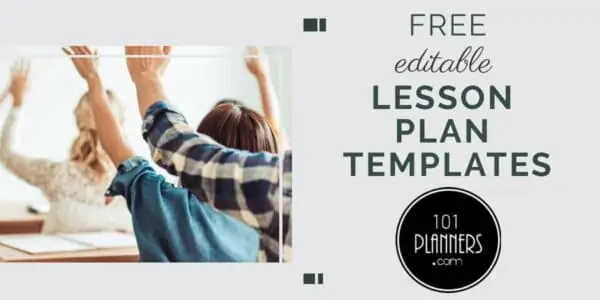
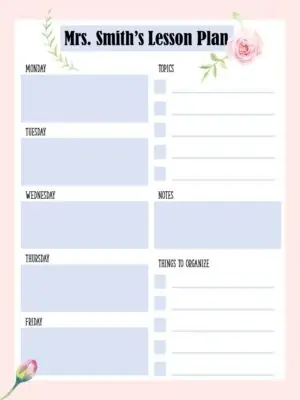
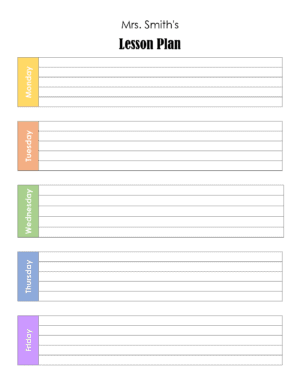
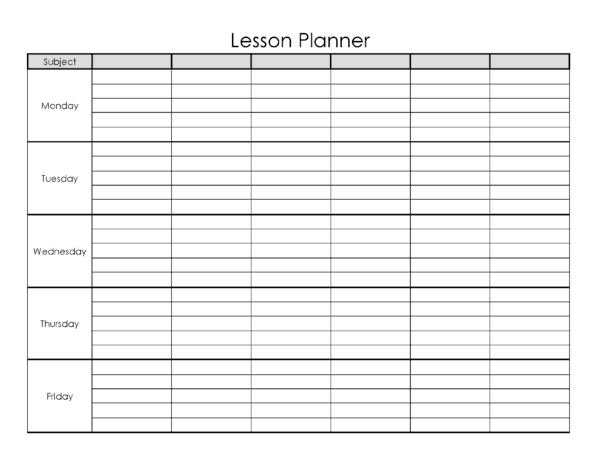
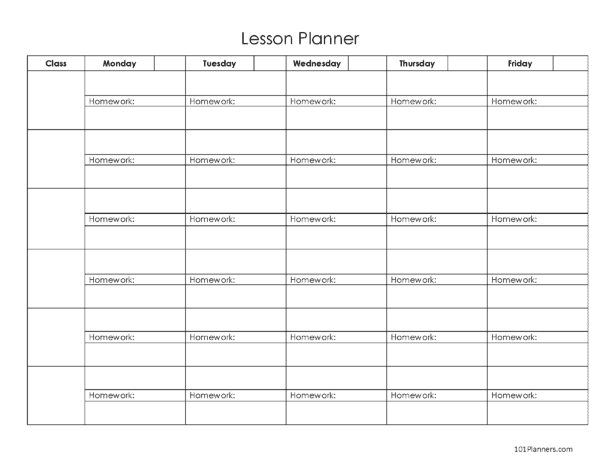
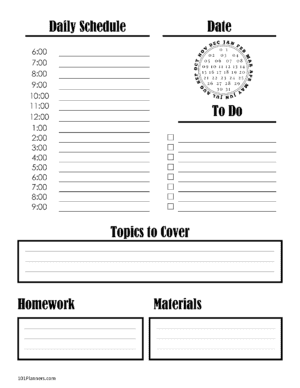
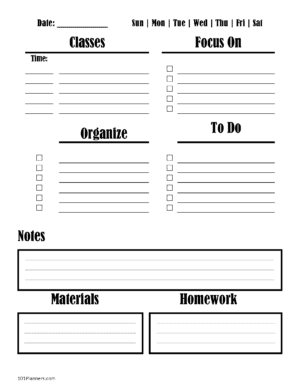
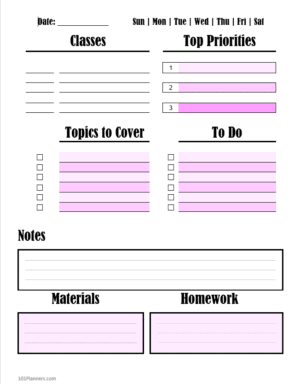
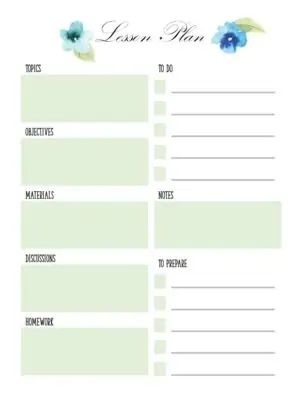
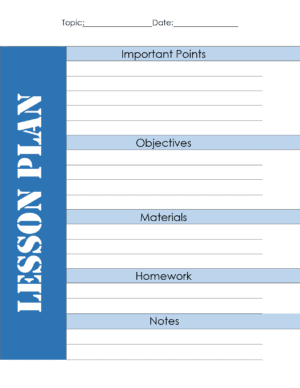
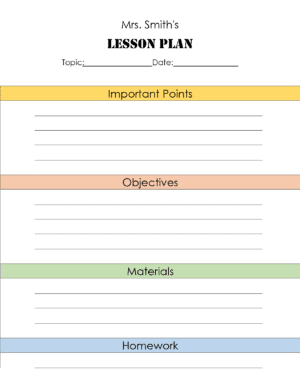
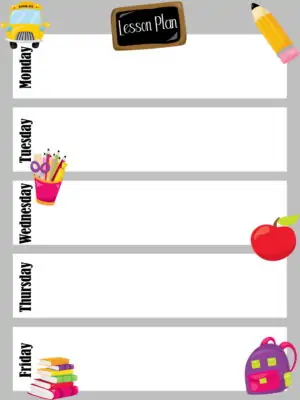
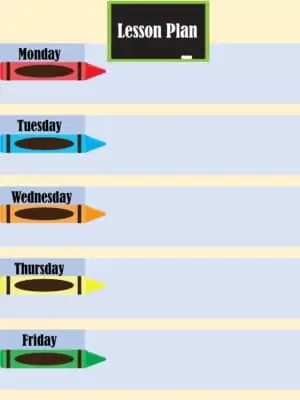
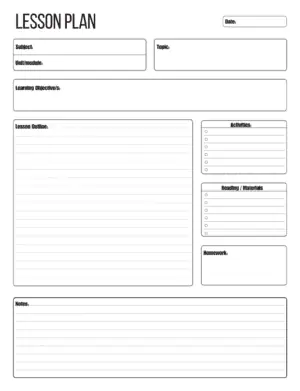
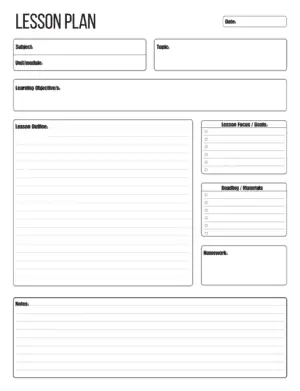
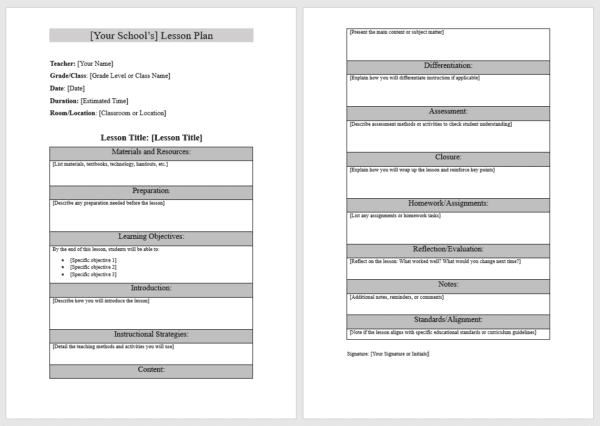
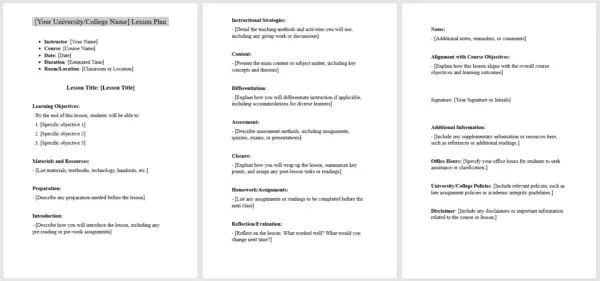
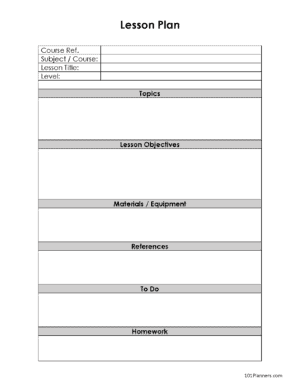
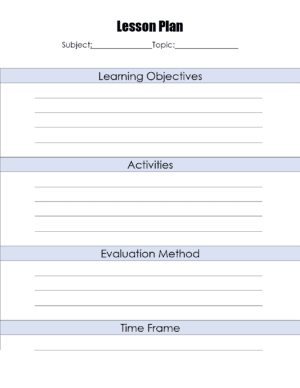
 My name is
My name is
Amazing resources!! Many thanks for sharing!! Sending my warmest greetings to you from Argentina